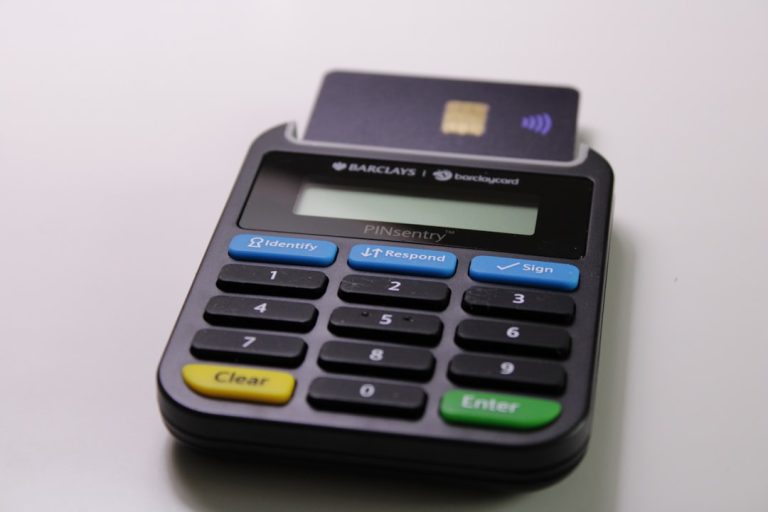Meta Description: Discover the top 6 PDF accessibility tools that ensure compliance with the latest standards, enhancing your documents’ accessibility.
Ensuring your PDF documents are accessible is not just a best practice—it’s a necessity in today’s digital landscape. With evolving regulations and a growing emphasis on inclusivity, utilizing a reliable free PDF compliance checker is crucial for businesses aiming to meet accessibility standards. Whether you’re a startup, an investor, or an accounting professional, the right tools can streamline your compliance process and enhance user experience. In this article, we explore the top six PDF accessibility tools for compliance in 2025.
What is PDF Accessibility?
PDF accessibility refers to the practice of making PDF documents usable by everyone, including individuals with disabilities. An accessible PDF ensures compatibility with assistive technologies like screen readers, speech recognition software, and screen magnifiers. This inclusivity allows users with visual, hearing, or mobility impairments to engage with the content seamlessly. Creating accessible PDFs typically starts with using accessible source documents such as Microsoft Word and converting them into PDF format. For existing PDFs, compliance checking is essential to identify and rectify accessibility issues.
Common PDF Accessibility Issues
Identifying common accessibility issues is the first step toward creating compliant documents. Here are some prevalent problems found in PDFs:
- Missing or Improper Tagging: Tags define the structure of a PDF, enabling screen readers to interpret content correctly. Without proper tagging, navigation becomes challenging.
- Incorrect Reading Order: Improper reading order can confuse users as screen readers may read content out of sequence, especially in multi-column layouts.
- Missing Alternative Text for Images: Non-text elements like images and charts need alt text descriptions for users who are visually impaired.
- Lack of Document Title and Metadata: A meaningful title and proper metadata help users and search engines understand the document’s purpose.
- Inaccessible Tables: Tables should have proper headers and a logical reading order to be correctly interpreted by screen readers.
- Insufficient Color Contrast: Poor contrast between text and background makes content hard to read for users with low vision or color blindness.
- Scanned PDFs Without OCR: Scanned images without Optical Character Recognition (OCR) contain no selectable text, rendering them inaccessible.
- Non-Descriptive Link Text: Links like “Click here” provide no context for screen reader users.
- No Form Field Labels: Interactive forms need clearly labeled fields for users relying on assistive technology.
- Security Settings Blocking Accessibility: Restrictions that prevent text extraction or screen reader access make PDFs unusable for people with disabilities.
How to Check PDF Accessibility
Checking PDF accessibility involves two primary methods:
-
Using Built-in Tools: Adobe Acrobat’s built-in accessibility tool is a popular option. By navigating to the Tools menu and selecting Accessibility Check or Full Check, users can identify potential issues within their documents.
-
Third-Party PDF Accessibility Checkers: These tools offer comprehensive evaluations against the latest WCAG guidelines and standards. They provide detailed reports on various elements, including text, tables, titles, and images, ensuring thorough compliance checks.
A free PDF compliance checker can go a long way in simplifying this process, offering businesses a cost-effective way to maintain accessibility standards.
Top 6 PDF Accessibility Checkers for Businesses
Ensuring your PDFs meet accessibility standards is critical. Here are the top six PDF accessibility tools for compliance in 2025:
1. Accessibility Checker
AccessibilityChecker.org offers fast and reliable PDF accessibility services tailored for businesses of all sizes. Their expert team ensures your documents comply with ADA, WCAG, and PDF/UA standards through a three-step remediation process:
- PAC Report (PDF/UA Compliance Check): Confirms adherence to PDF/UA standards with comprehensive automated checks.
- CommonLook PDF Compliance Report: Verifies compliance with major accessibility standards by passing 55 accessibility tests.
- Adobe Acrobat Accessibility Report: Ensures compatibility across various PDF readers and assistive technologies.
Unlock a PDF accessibility quote in 24 hours or less!
2. PDFix Desktop Lite
With over 25 years in the PDF technology space, PDFix Desktop Lite is a trusted tool for ensuring digital document accessibility. This free PDF viewer and accessibility checker audits PDFs against the latest standards, clearly highlighting areas that need attention.
3. Adobe Acrobat Pro DC
A staple in PDF editing, Adobe Acrobat Pro DC also serves as a robust accessibility tool. By activating the Accessibility Check feature, users can perform full checks to identify and address potential accessibility issues within their documents.
4. PREP by Continual Engine
PREP is a cutting-edge PDF and Document Remediation Platform driven by advanced AI. It automatically tags up to 90% of your content, significantly reducing manual effort. PREP ensures compliance with WCAG 2.2, PDF/UA, and Section 508 standards, featuring a real-time screen reader preview for confidence in accessibility benchmarks.
5. CommonLook PDF Validator
Developed by Allyant, CommonLook PDF Validator is a professional-grade tool that checks PDFs for WCAG, PDF/UA, and Section 508 compliance. It integrates seamlessly with Adobe Acrobat, providing in-depth accessibility validation. The tool is available for free upon completing a quick form on the Allyant website.
6. axesPDF
axesPDF is a straightforward yet capable tool for checking and fixing PDF accessibility issues. It verifies compliance with PDF/UA and WCAG standards, offering structured reports with remediation suggestions. The desktop tool is easy to download, with additional resources available for further guidance.
How to Remediate Your PDF Documents
After auditing your PDFs, follow these steps to ensure accessibility:
- Use Proper Tagging: Utilize Adobe Acrobat Pro DC’s AutoTag Document feature or manually adjust tags to ensure a logical reading order.
- Add Alternative Text to Images: Right-click on images to add meaningful alt text, marking decorative images as artifacts.
- Ensure Proper Use of Headings and Lists: Structure headings hierarchically and format lists using appropriate tags.
- Provide a Descriptive Document Title: Add a meaningful title in File > Properties > Description and ensure it appears in Initial View.
- Check Table Accessibility: Use structured table headers and add scope attributes for correct screen reader navigation.
- Improve Color Contrast: Ensure text has at least a 4.5:1 contrast ratio using a free Color Contrast Checker.
- Convert Scanned PDFs to Searchable Text: Use OCR in Acrobat to recognize and tag text correctly.
- Make Forms Accessible: Add clear labels and tooltips using Acrobat’s Prepare Form tool and test with screen readers.
- Check Security Settings: Ensure “Enable Text Access for Screen Reader Devices” is allowed in security settings.
Summary
With the increasing importance of digital accessibility, utilizing a free PDF compliance checker is essential for businesses aiming to meet current standards. The tools listed above offer comprehensive solutions to ensure your PDFs are accessible, inclusive, and compliant. By prioritizing accessibility, you not only enhance user experience but also protect your brand from compliance-related issues.



